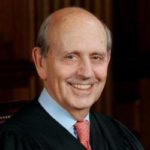When the stories of We the People become cases before the U.S. Supreme Court, and when those cases result in the opinions of the Court, history turns. The ways we think about and live under the Constitution are reflected in the Court’s interpretations in both their historical contexts and their legacies. Some cases — and the Court’s opinions in them — so profoundly alter our constitutional understandings that they can only rightly be called Landmark Cases, markers of where we have traveled as a nation. In this way, the Landmark Cases show us what we have tried, where we have been, and where we are — leaving We the People and future sessions of the Supreme Court to determine how we move forward toward a more perfect union.
Freedom of Religion: Free Exercise Clause
Students will examine the protections enshrined in the First Amendment’s Free Exercise Clause. Students will use the Interactive Constitution to examine the Free Exercise Clause’s text and history and how the Supreme Court has interpreted it over time. In this lesson, students compare and contrast the questions, opinions, and dissents in a series of Supreme Court cases to define when the Free Exercise Clause does and does not limit government action.
A Famous Kansas Child
In this lesson, students will read about a Kansas child involved in a famous United States Supreme Court case. They will think critically to form opinions about equality, segregation, and integration, and will distinguish between fact and opinion.
Grade 9-12 Methods of Interpreting the Constitution
The purpose of this lesson is to explain the two overarching modes of constitutional interpretation, strict and loose construction, and their use and application to particular Supreme Court cases. After an in-class investigation activity to explore the methods of interpretation, students will be given the opportunity to express their opinions of the merits and limitations of each method during a mock Supreme Court session where students will revisit two Supreme Court opinions.
Grades 11-12: Understanding the Second Amendment through Primary Sources: Assessing the Supreme Court’s Opinion in D.C. v. Heller
In this lesson, students will examine the scope, origins and development of the Second Amendment to the United States Constitution. Students will assess and evaluate the Supreme Court’s decision in District of Columbia v. Heller (2008) by assuming the role of Supreme Court justice and engaging directly with the historical source materials used by the Court. Students will then work together as a class to decide on the scope and meaning of the Second Amendment.
8th Grade: Understanding the Second Amendment through Primary Sources: Assessing the Supreme Court’s Opinion in D.C. v. Heller
In this lesson students, will examine the scope, origins and development of the Second Amendment to the United States Constitution. Students will assess and evaluate the Supreme Court’s decision in District of Columbia v. Heller (2008) by assuming the role of Supreme Court justice and engaging directly with the historical source materials used by the Court. Students will then work together as a class to decide on the scope and meaning of the Second Amendment.
The Origin, Nature and Importance of the Supreme Court
Chief Justice John G. Roberts Jr. and high school students discuss the Supreme Court: its history and traditions, how it selects and decides cases, and the role of an independent judiciary. A lesson guide accompanies the video.
The Nature of Dissent in the Supreme Court
Participate in the Judicial Process – Rule of Law
Review the facts, rulings, majority and minority opinions, and reasoning of these two landmark Fourteenth Amendment Supreme Court cases – Batson v. Kentucky and J.E.B. v. Alabama.
Seeking Facts to Solve Mysteries
In this lesson, students will discuss the difference between fact and opinion. They will role play a mock trial, decide the case, and justify their decision. Students will discuss why facts are more reliable than opinions, and understand why courts rely more upon facts than opinions.
